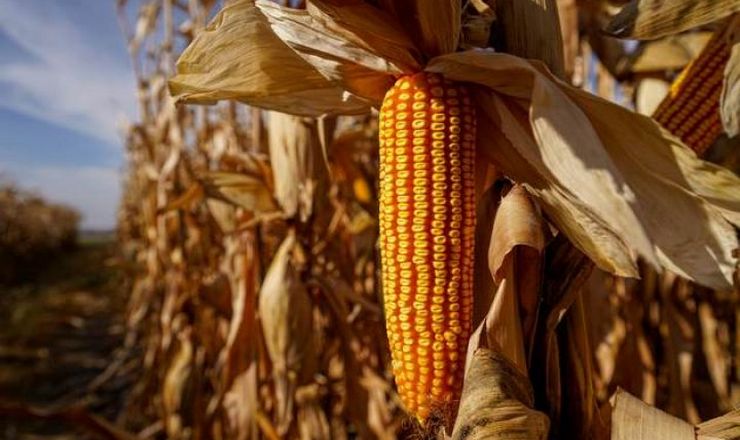Brazilian market of corn sees progress in the harvest and export schedule

While the US crop is yet to be defined, the Brazilian market has the arrival of its biggest corn crop advancing, as well as surprisingly high sorghum production. Even if the export flow advances at a good pace from now on, the outflow via the port is not enough to absorb all this production that starts to reach warehouses nor avoid regional logistic collapses. Lower production in Ukraine and Argentina will help Brazil to have good exports in the second half of the year, but this shipment speed will depend on foreign buyers and the space in ports.
With rains still in July in Paraná and São Paulo, the second-crop harvest of corn may still advance slowly in the coming few days. However, the risk of frosts for July has quite decreased from Paraguay to São Paulo. The design of a full crop is taking shape. Harvests in this production range start slowly, and we may still have a higher concentration at the end of July and in August.
Mato Grosso advances with exuberant harvests and average yields still close to 140 bags/hectare, an average that could decrease with the final half of the harvest. But the logistics framework is evident, with several production regions already having open-air storage, and the harvest is still at 34.3%. Many growers are already delaying the harvest to wait for space in logistics and the withdrawal of the volumes already sold to trading companies. The fact is that we will still have plenty of corn to be reaped and in need of space for the next thirty days.
Goiás began to speed up the harvest of corn more intensely last week. High yields, above 150 bags/hectare, are crowding silos and generating queues in warehouses faster than normal. Some cooperatives and cereal traders already limit the receipt to previously set commitments and immediate sales. There are many silo bags and lots of sorghum. The harvest is just beginning and could collapse the storage environment in the coming few weeks.
Minas Gerais has a later second crop, the harvest has not been significant thus far, and the increase in supply should appear by August. However, some sorghum crops are already starting work and trying to find a market share with corn at such low prices.
In recent days, the movement of prices on the CBOT and the exchange rate has slightly helped corn prices in ports. At the end of June, the port reached BRL 64/65/66 a bag for August/September. Last week, the price lows on the CBOT were offset by some recovery in premiums. The rise in the exchange rate over the week helped keep prices at ports at the levels of BRL 58 to BRL 61 a bag. Some opportunities have arisen, but the exporter’s buying flow is not aggressive for July/August, but for September onward, also due to logistics.
At this point, there is the conflict of harvest versus flow. The demand from trading companies is normal but not immediate. The harvest is already strong in some locations in July, but the flow of receipts and sales is not at the same pace. Freights start to rise with plenty of soybeans, sugar, soymeal and corn going to ports. So, we have a good flow going toward the port, however, that is not enough to generate an environment of price support and/or a solution for receiving the strong harvest that is arriving internally.
The July line-up is now at record highs. Appointments for July shipments reached 6.4 mln tons. Shipments will not likely reach this volume, with volumes left for August. In the first week, July registered a good shipment of 735 thousand tons, which leads us to project 4 to 4.5 mln for the month. Plenty of soybeans and sugar are still in the shipping queues, not allowing a strong flow of corn.
The internal corn market, therefore, will continue to suffer from the predictable, harvest arrival, and good flow to the port, but insufficient to absorb all the harvest pressure, the internal market will do its job of purchasing at export parity and within the selling pressures that will arise in the coming few weeks. Of course, some states such as São Paulo, Paraná, and Minas Gerais have a transition between the beginning of the second crop harvest and the end of the summer supply, which still brings some resistance to commercialization in the sense of bringing prices down even further. However, we can already clearly see Mato Grosso’s supply for these locations and sorghum appearing everywhere at very competitive prices.
The problem with sorghum is the high production that will eventually reduce the flow of demand for corn, mainly in segments such as confinement and pig farming. In other words, there may be more corn available than we imagine for exports or carryover stocks for 2024. Thus, sorghum has prices of BRL 25 to 32 between Goiás, Minas Gerais, and São Paulo, and competes with second-crop corn, which has prices of BRL 25 in Mato Grosso, BRL 32 to 37 in Goiás, BRL 47/50 in Minas Gerais, BRL 47/50 in São Paulo, BRL 50 in Paraná, and BRL 37/40 in Mato Grosso do Sul.
So that corn prices can improve in the biggest Brazilian harvest, the weather scenario will need to bring some worsening, compromising the US production, and/or the exchange rate surpassing again at least BRL 5.00/dollar.
Read also
Wheat in Southern Brazil Impacted by Dry Weather and Frosts
Oilseed Industry. Leaders and Strategies in the Times of a Great Change
Black Sea & Danube Region: Oilseed and Vegoil Markets Within Ongoing Transfor...
Serbia. The drought will cause extremely high losses for farmers this year
2023/24 Safrinha Corn in Brazil 91% Harvested
Write to us
Our manager will contact you soon



